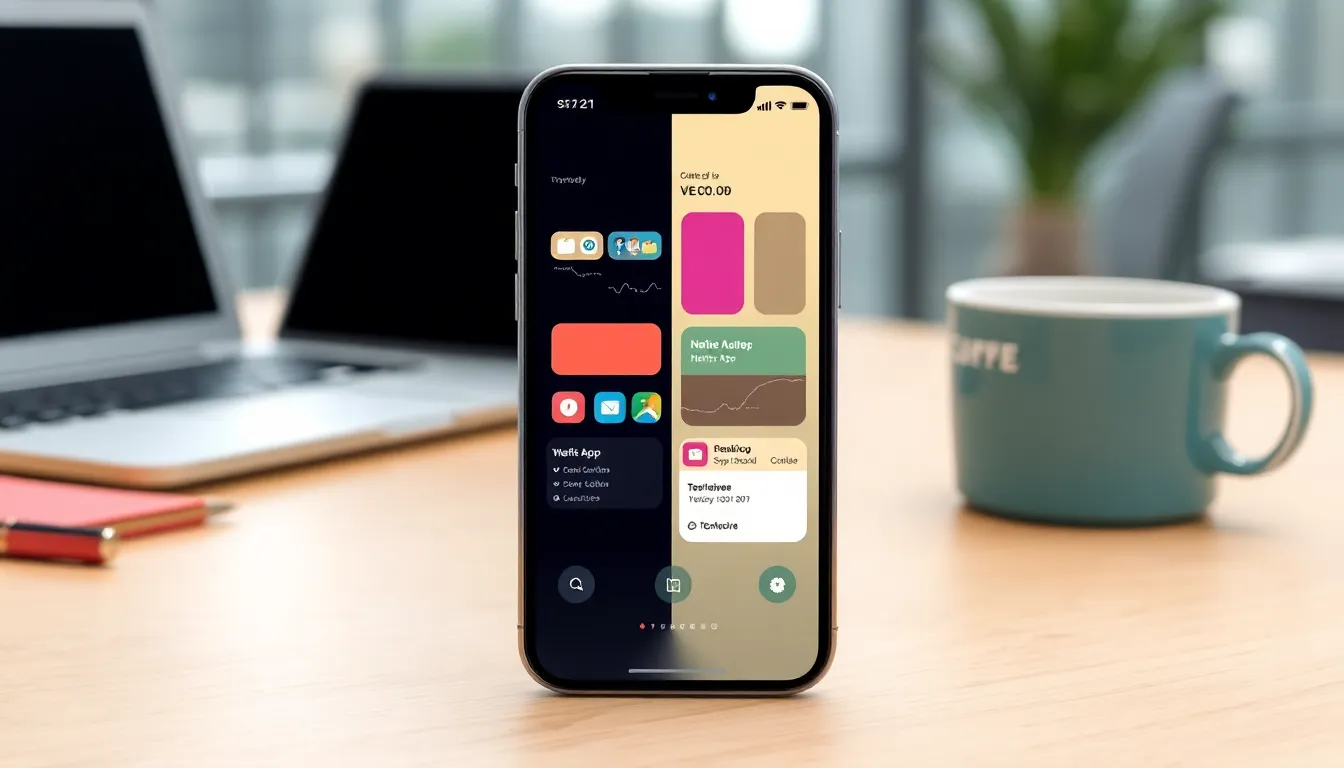In today’s digital playground, the battle between web apps and native apps is hotter than a jalapeño in a sauna. Both have their perks and quirks, but which one truly deserves a spot on your device? Web apps promise the convenience of access from any browser, while native apps boast speed and seamless integration with your device’s features. It’s like choosing between a trusty Swiss Army knife and a high-performance sports car—both are impressive, but they serve different purposes.
Web Apps vs Native Apps
Web apps run in web browsers and can be accessed on any device with internet connectivity. These applications are built using standard web technologies like HTML, CSS, and JavaScript. Users benefit from easy updates since changes occur on the server side, eliminating the need for manual downloads.
Native apps, on the other hand, are designed for specific platforms like iOS or Android. Built using platform-specific programming languages such as Swift for iOS or Kotlin for Android, these applications often provide superior performance. They utilize device features like cameras and GPS more effectively, resulting in a more integrated user experience.
Compatibility is a significant consideration. Web apps typically work across multiple devices and operating systems, ensuring broader accessibility. Native apps, while limited to specific platforms, adapt better to their respective ecosystems and often provide a smoother user interface.
Security also differs between the two types. Web apps face vulnerabilities common to browsers, while native apps can implement advanced security features unique to their platforms. Users may experience a higher level of data protection with native apps.
Additionally, development costs differ significantly. Building a web app generally incurs lower expenses due to its cross-platform nature. In contrast, creating native apps often requires separate development efforts for each platform, leading to increased costs and time.
Both web apps and native apps serve distinct purposes in the mobile application landscape. Web apps prioritize accessibility and ease of maintenance, while native apps focus on performance and integration. The choice between them depends on specific needs, target audiences, and available budgets.
Key Differences

Web apps and native apps differ significantly in various aspects, shaping their utility and appeal for different users.
Development Process
The development process for web apps involves using standard web technologies such as HTML, CSS, and JavaScript. Developers create a single version of the app that works across multiple platforms. In contrast, native apps require different versions for each operating system. Each version demands specific programming languages like Swift for iOS or Kotlin for Android. This dual development approach increases the overall complexity, time, and costs involved in native app development. Consequently, teams must allocate more resources to maintain multiple codebases.
User Experience
User experience varies significantly between the two types of apps. Web apps offer simplicity and convenience, operating through browsers without requiring installation. While easy to access, the user experience might feel less integrated. Native apps, however, deliver a richer experience through seamless interaction with device features, like GPS, camera, and notifications. Additionally, these apps can work offline and run more fluidly, as they leverage device hardware efficiently. The sense of familiarity users feel with native apps often leads to higher engagement levels.
Performance
Performance levels often favor native apps due to their direct access to device resources. Native apps execute tasks faster, offering smoother animations and responsive controls. Web apps may face limitations, particularly in processing power and speed, as they rely on browser capabilities. Load times may increase, particularly on slower networks or older devices. However, web apps can achieve significant performance improvements through progressive web app (PWA) technologies. Overall, while native apps are generally superior in performance, web apps continually evolve to close the gap.
Advantages of Web Apps
Web apps provide distinct advantages that cater to various user needs. Their flexibility and broad access make them a popular choice among developers and users alike.
Accessibility
Accessibility remains one of the foremost benefits of web apps. Users can access these applications from any device with a web browser, regardless of the operating system. This cross-platform capability ensures that individuals using desktops, tablets, or smartphones can easily engage with the app. Moreover, web apps don’t require installation, simplifying user onboarding. Frequent updates can also occur without additional downloads, allowing users to always access the latest features and improvements. As a result, web apps enhance user convenience and streamline accessibility across different devices.
Cost-Effectiveness
Cost-effectiveness is another significant advantage of web apps. Development typically involves creating a single version to serve multiple platforms, drastically reducing overall costs. Unlike native apps, which necessitate separate development for each operating system, web apps maintain a streamlined approach. This efficiency translates to lower maintenance expenses as well. Furthermore, updates can be managed from the server side, avoiding multiple deployment processes. Businesses also benefit from reduced time-to-market, maximizing resource allocation for other critical projects. Ultimately, web apps present a financially sound option for organizations looking to optimize their digital presence.
Advantages of Native Apps
Native apps offer significant advantages, particularly in performance and device integration. These apps are crafted for specific platforms, allowing them to tap into device capabilities more effectively.
Performance Optimization
Native apps boast superior performance due to their close relationship with the operating system. Faster load times result from direct access to device hardware and resources. High-speed animations and fluid graphics enhance user experience, delivering seamless interactions. Developers write these apps in platform-specific languages, optimizing code execution. As a result, native apps can utilize advanced features, providing users with a smooth and responsive feel. Complicated tasks execute swiftly, ensuring that applications function at peak efficiency. Users often experience fewer bugs, leading to greater satisfaction and engagement.
Device Integration
Device integration stands out as a primary benefit of native apps. These applications access features like the camera, GPS, and push notifications directly, enhancing functionality. Comprehensive integration with system features allows users to interact intuitively with their devices. Users can enjoy offline capabilities, ensuring app functionality without internet access. Native apps also leverage security features specific to each platform, offering enhanced data protection. Access to native UI components creates a familiar experience, making it easier for users to navigate the app. Customization options emerge, allowing users to tailor app settings to their preferences.
Conclusion
Choosing between web apps and native apps ultimately hinges on individual needs and goals. Web apps shine in accessibility and cost-effectiveness making them ideal for businesses seeking broad reach without heavy investment. Their ability to update seamlessly keeps users engaged with the latest features.
On the other hand native apps excel in performance and integration offering a richer user experience that can leverage device capabilities. They cater well to users who prioritize speed and functionality.
Understanding these differences allows businesses to make informed decisions that align with their objectives and audience preferences. Whether opting for the versatility of web apps or the robust nature of native apps the right choice can significantly impact user satisfaction and engagement.



